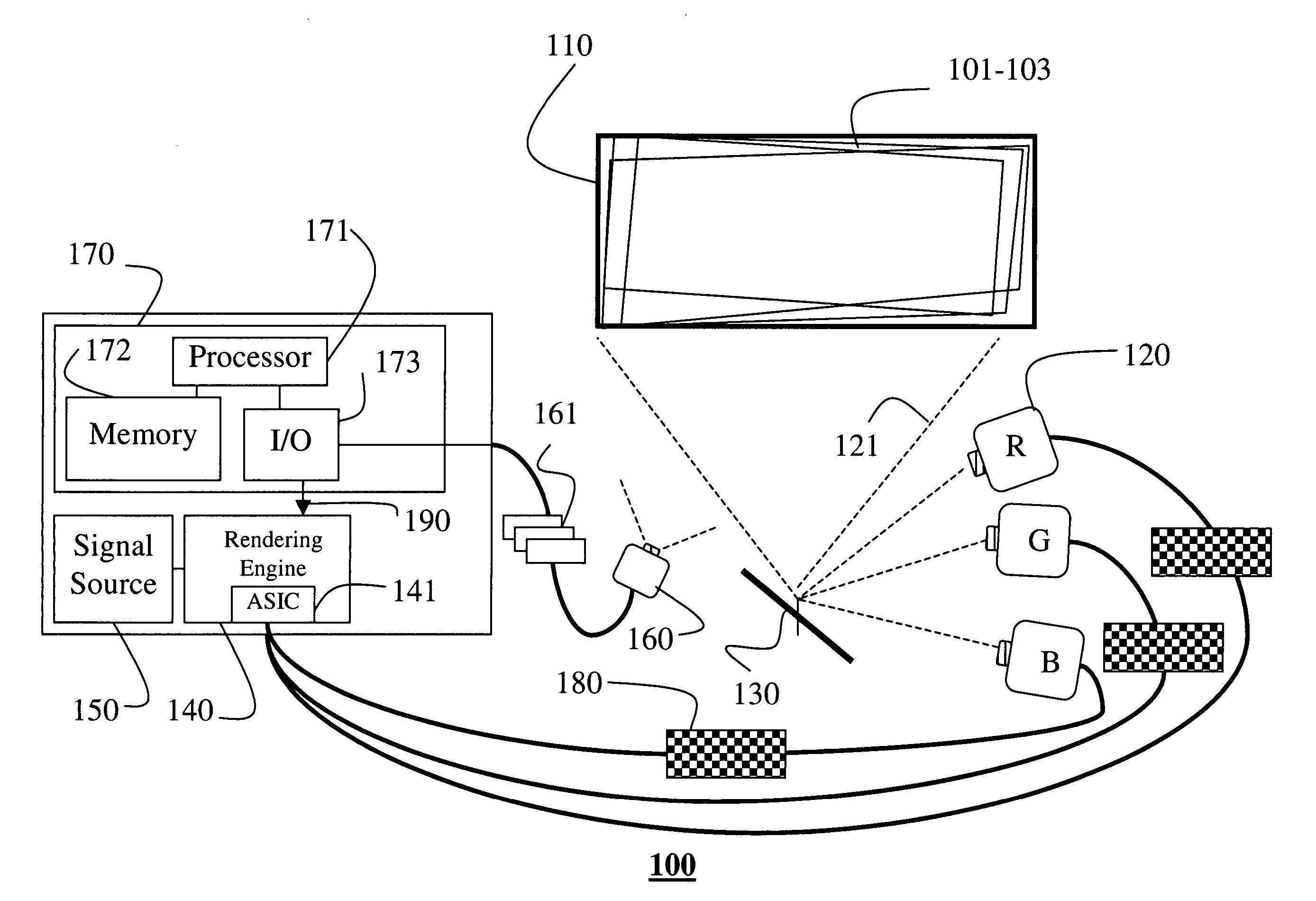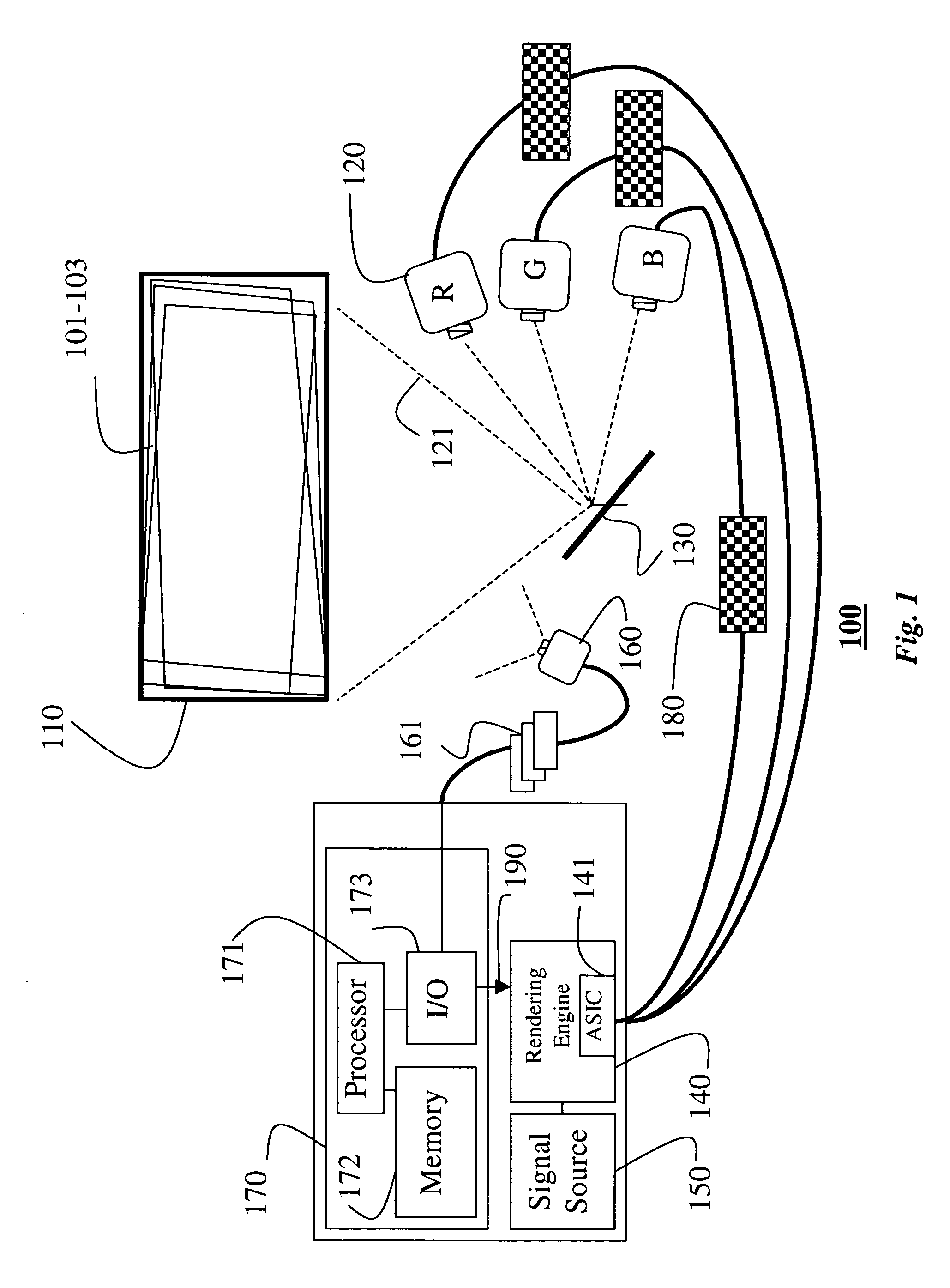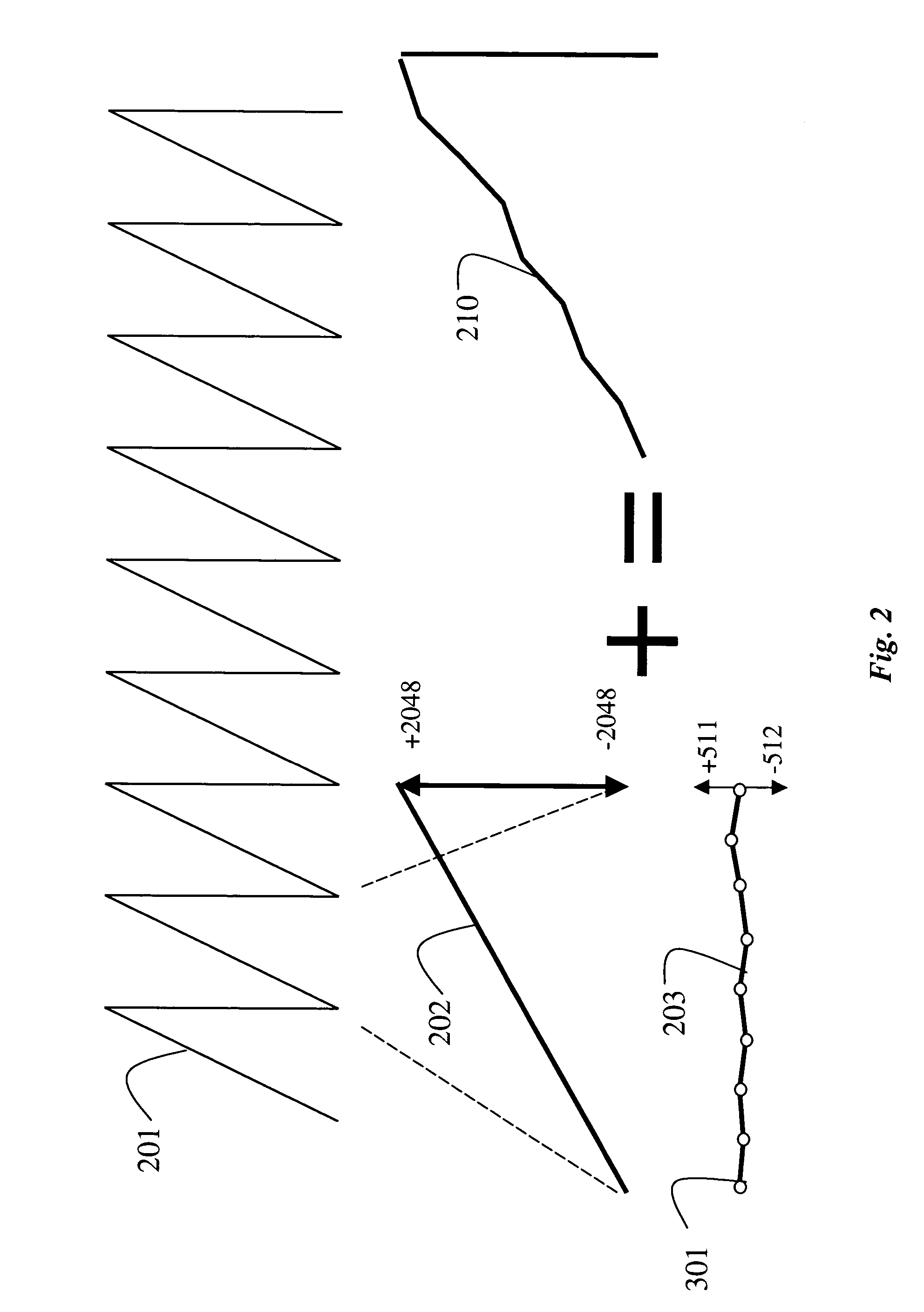Self-correcting rear projection television
a rear projection television and self-correction technology, applied in the field of rear projection televisions, can solve the problems of blurred projected images, objectionable color fringe artifacts, and difficulty in maintaining convergen
- Summary
- Abstract
- Description
- Claims
- Application Information
AI Technical Summary
Problems solved by technology
Method used
Image
Examples
Embodiment Construction
[0019]FIG. 1 shows a self-convergent projection television (PTV) 100 according to our invention. Three images 101–103 are projected onto a rear projection screen 110 by three CRTs 120 (RGB). Each CRT produces images consisting of an n×m array of pixels, which determine an aspect ratio of the images.
[0020]The images 101–103 are usually projected via a mirror 130 to increase the size of the projected images 101–103 by lengthening the optical paths 121. The images can be generated by a rendering engine 140. The rendering engine can be in the form of a raster generator, graphics hardware card, or a an application specific integrated circuit (ASIC) 141. The rendering engine can be coupled to a signal source 150, such as, a television receiver, video player, graphics hardware, computer, and the like, as known in the art.
[0021]The PTV also includes a computer system 170 comprising a processor 171, memory 172, and I / O interface 173 connected by buses to each other and the rendering engine 1...
PUM
 Login to View More
Login to View More Abstract
Description
Claims
Application Information
 Login to View More
Login to View More - R&D
- Intellectual Property
- Life Sciences
- Materials
- Tech Scout
- Unparalleled Data Quality
- Higher Quality Content
- 60% Fewer Hallucinations
Browse by: Latest US Patents, China's latest patents, Technical Efficacy Thesaurus, Application Domain, Technology Topic, Popular Technical Reports.
© 2025 PatSnap. All rights reserved.Legal|Privacy policy|Modern Slavery Act Transparency Statement|Sitemap|About US| Contact US: help@patsnap.com



